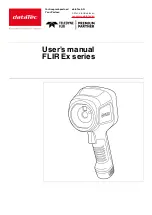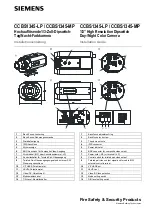
ThermoCamera HighSense (Pro)
1. Set emissivity coefficient to 1.0
2. Blur the object out of focus (Refer to Section 15.1)
3. Aim the camera in the opposite direction
of the actual measured object
4. Determine the average temperature
5. Set the average temperature as the reflection
temperature
Infrared measurements of specific objects can be affected by reflection from other objects nearby or even
from the ambient air because the measured object cannot be fully isolated. The reflection temperature
setting can help compensate for the interference. The reflection temperature is generally the same as the
ambient temperature. However, if larger objects with significantly different temperatures (approx. > 20 °C)
are in close proximity to the measured area, its effects must be taken into account. For this purpose,
follow these steps:
High humidity can lead to the lens of the thermal
imaging camera misting over which means the infrared
radiation is not fully received. The infrared radiation is
absorbed on the way to the lens by the atmosphere
and distributed by the water vapour suspended in the
air, amongst other things (relative humidity).
These influences should be taken into consideration,
particularly when the distance to the measured object
exceeds around 30 m. This can have a negative
influence on the measuring accuracy. The parameter
can be set from 10 % to 100 % to compensate for
the influence of the relative humidity. Thick fog can
also affect the measurement as the water droplets
in the transmission path allow less infrared radiation
through.
Relative humidity
Reflection Temperature
7.2
Parameter:
Relative humidity
7.1
Parameter:
Reflection temperature
33
EN
Summary of Contents for ThermoCamera HighSense
Page 54: ...54 ...
Page 55: ...ThermoCamera HighSense Pro 55 ...
















































